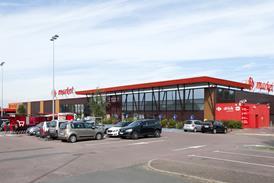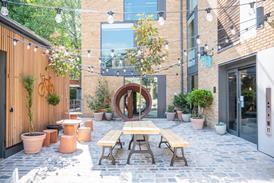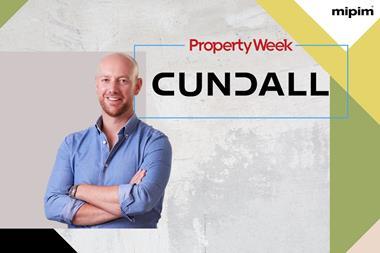This week, we take a closer look at the implications of new second-staircase rules for high-rise residential developments.

The updated wording for Approved Document B on fire safety, released on 29 March, outlined the extent of new requirements and the timetable for their introduction. What the new document failed to do, however, was provide real clarity.
As our analysis draws out, the implications of such a sweeping change in policy are not limited by whatever words may or may not appear in building regulations. Change and the manner of its arrival will also influence sentiment in ways that can be hard to forecast.
Homebuyers, insurers, lenders and investors will now make up their own minds about what is or isn’t safe, in terms of risk to capital as well as risk to life and limb, in the wake of a great deal of debate.
Similarly, the mayor of London and the Greater London Authority may yet determine that the Document B rules don’t go far enough for tall resi buildings within the capital.
The end result is likely to be an excess of caution in the design of new developments, which may be to the detriment of actual safety.
Adding staircases to future buildings will cost billions over the next 10 years
As Hydrock fire safety expert Dr James McNay tells us: “[Requiring] specific features like two staircases or cores does not inherently enhance safety, as buildings must be reviewed individually.” Indeed, he adds that the updated wording may encourage a complacent or box-ticking approach, rather than ensuring that the safety measures adopted are the right ones to achieve the desired outcome in the real world.
It seems unlikely that all of the 38,000 homes in London that are thought to have been halted by uncertainty over staircase rules will now be unlocked. Many developers may continue to stall until there is greater clarity about how the market will react to the latest rules.
As our analysis details, there is also the small matter of cost. Adding staircases to future buildings will cost literally billions over the next 10 years. Some resi developers will decide the extra costs cannot be borne by their schemes as originally envisaged, and they will need to go back to square one, or at least some significantly earlier step in their planning, to create a new commercially viable proposal.
Others will plough on and seek to absorb additional costs or, more likely, pass them on to homebuyers or renters.
A few weeks ago, British Land’s Roger Madelin outlined the stack of costs, tariffs and levies that form a tower of overheads for every square foot of new residential property built in the capital. It made it virtually impossible, he said, to build and sell a two-bed flat for less than a million quid.
The requirement for a second staircase will simply add to the pile and make such flats more expensive still.
I am by no means arguing for less safety. The Grenfell tragedy provided an awful, unforgettable lesson in how not to build high-rise residential property. But increasingly it seems that the second-staircase rules are providing another negative lesson – how not to bring in new measures that are supposed to make people safe.































No comments yet